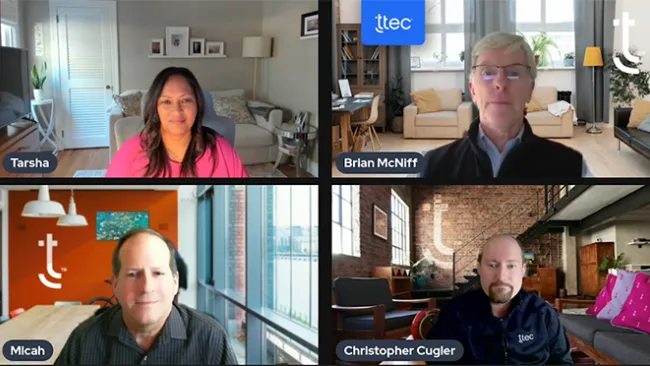
Centralized solution, local control
Our client was stuck with outdated technologies that were keeping them from being able to satisfy their customers' needs. We helped by implementing a new VoIP platform.
Centralized solution, local control
Our client was stuck with outdated technologies that were keeping them from being able to satisfy their customers' needs. We helped by implementing a new VoIP platform.
accommodates
regional control
for client planning,
convenience
center established
overnight
Outdated technologies were presenting our client, a state social services agency, with a huge dilemma.
The agency needed a centralized system that would allow for regional control, granting associates the ability to meet the unique needs of citizens calling into various divisions and departments, while still fully leveraging human and capital resources among the entities. Finding a balance between segregating departments and keeping costs in check was essential. In addition, the state mandated that the system have the ability to expand to respond to natural disasters resulting in extreme spikes in call volume and numbers of stations.
The technology components of the solution started with an entire replacement of the hub and spoke ATM-based WAN to a multiprotocol label switching (MPLS) WAN. Migration from the hub and spoke ATM network to the MPLS design created more efficient routing while also accommodating the Quality of Services (QOS) needed to support VoIP telephony. Cisco’s Unified Communication Manager and Unity Voice Mail services were layered on top of the MPLS WAN to provide IP-based voice services for 35 offices. As old key system telephone platforms reach end of life, and the agency expands to new offices, the VoIP solution is evaluated to provide voice services.
Phase One involved deploying the VoIP platform to 25 regional 2-1-1 Information and Referral centers (also known as Area Information Centers, or AICs). These AICs served as the testing ground for the Cisco platform, and validated that they could indeed operate with regional business rules yet also participate in a statewide system in time of need. Phase Two of deployment consisted of bringing on an additional 1,000 back-office program administration stations at three different locations. Phase Three was linked to an enterprise redesign of the eligibility and enrollment process, and the client determined that it was more cost-effective to migrate the enrollment process from face-to-face discussions in the field to phone-based interactions with a call center solution.
Today, the platform solution continues to provide WAN services to more than 400 offices, and telephone services to more than 3,000 users, providing unique features for the individual departments. The solution accommodates PBX/Voice Mail users at 4,500 stations, 1,200 contact center associates, and 3,600 ports of Complex Self-Service IVR. The agency realized cost savings and efficiencies utilizing the Cloud’s usage-based OpEx model. In addition, the solution has achieved pure scalability and flexibility, with 100-seat contact centers being established literally overnight to in response to natural disasters. Finally, as a testament to the successful implementation and fulfillment of the client’s expectations and requirements, three other agencies from this state later joined the platform.












